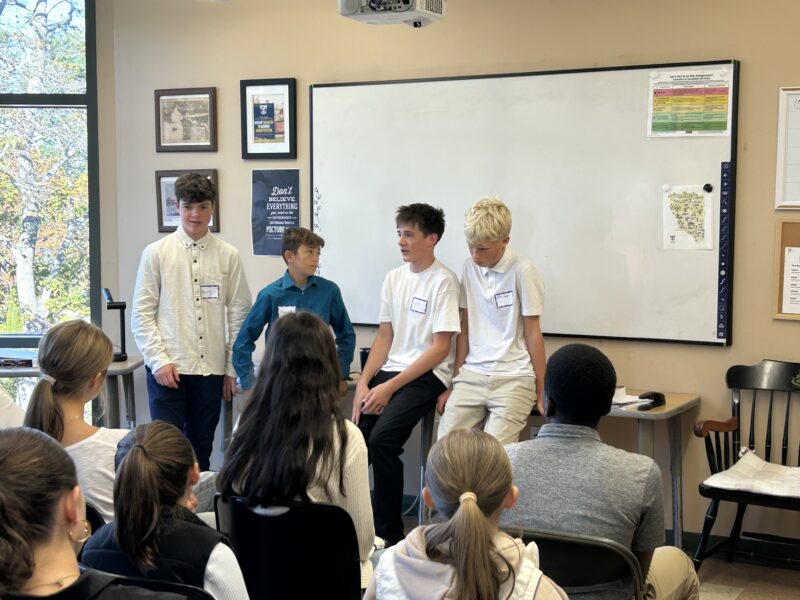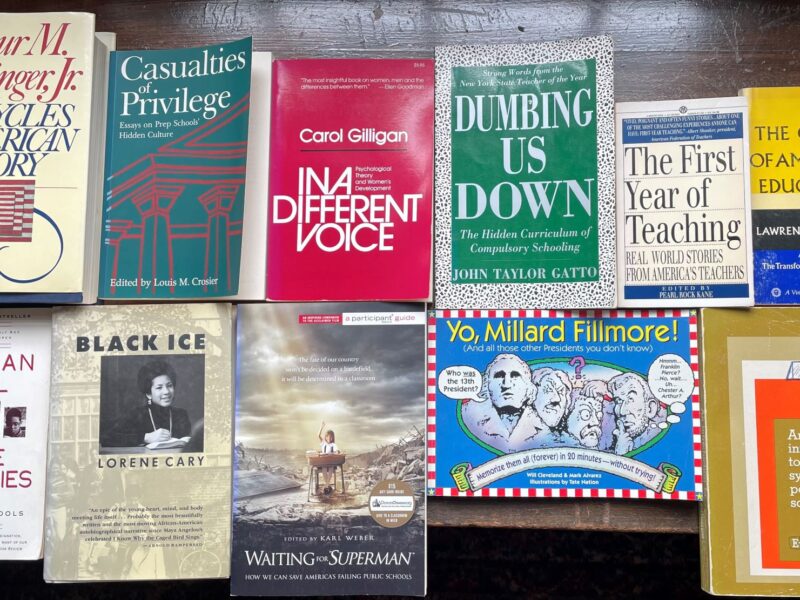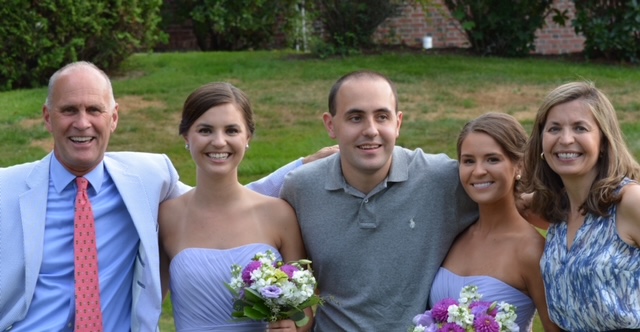During the past few years I have been honored to present my “culture talk” — alternately called “The Secret Sauce of School Culture” and/or “Culture by Design” — to various audiences of committed educators at a number of conferences. (*Complete List Below)
Before jumping into the details, I like to start out with my end game. I may have spent most of my career at a college preparatory school, but I keep this homemade poster on my office wall:

Next, I spend a few minutes on what we’re up against. Back in my coaching days, I learned that after you’ve got your own team operating in a strong mode, it can help to know something about your opposing team. If you work with kids, here’s a scouting report:

Moving to our game plan, my main point is that great cultures consistently embody three ingredients:
– #1: an aspirational core principle or reason for being;
– #2: an inspiring common language that effectively distills #1 and becomes a daily reference point for communications among all stake-holders;
– #3: a set of dynamic practices and traditions that reflect and amplify #1 and #2.

Starting with #1, consider the core principle of one of America’s most prestigious educational institutions:

Ve Ri Tas – The “search for truth” is a big goal. Suffice it to say that it more than qualifies for what Jim Collins (author of Good to Great) calls a B.H.A.G. (Big Hairy Audacious Goal). Another example can be found just down the hill from my home in Bath, Maine:

Think JFK saying in 1962 that we would go to the moon (and back ) before 1970… Think Martin Luther King outlining his dream on the steps of the Lincoln Memorial… It’s big stuff!
It’s also not easy stuff. Speaking of Harvard, here’s what former president Larry Bacow said during his final convocation exercises on campus:

Next comes common language. If you have any experience with Hyde School, you know that our community strives to honor 5 Words and 5 Principles.

When I examine a school’s or any other entity’s common language, I find myself scrutinizing for three Yin and Yangs.

While I get pretty deep exploring the ins and outs of this triad in my new book…

… for our purposes here, how ’bout we go Cliff’s Notes, applying the three Yin and Yangs to Hyde’s 5 Words and Principles.
First, effective common languages typically have some concepts that are fairly easy to understand (e.g., Concern or Courage) as well as some that are more complex (e.g., Destiny or Humility)… Second, some words ought to be ones with which most stakeholders would naturally agree (i.e., consensus) as well as some that might test their sensibilities. For example, in all my years at Hyde, I cannot recall anyone every arguing that Concern should not be one of the 5 Words. However, I have heard many stakeholders disagree with the notion of Truth as one’s primary guide to say nothing of expressing discomfort with Each Other’s Keeper. Rather than spend much time justifying the tension between consensus vs. reach, consider simply letting it be and allowing stakeholders to explore it… Third, I wish I could take credit for performance vs. moral character, but that goes to Thomas Lickona and Matt Davidson, two fellow lifetime travelers in the character ed lane who have had a profound impact on my own work. In their awesome book Smart & Good High Schools, they delineate 8 Strengths of Character.

In short, performance character has to do with qualities related to excellence such as effort and persistence while moral character speaks more to empathy, purpose, and spirituality. As you can see, Matt and Tom’s 8 Strengths of Character speak to both moral and performance. (Although they predate Matt and Tom’s dichotomy, Hyde’s 5 Words and Principles reflect it to a large degree.)
Once the common language is determined, I would submit that it’s impossible to overdo it. For example, one year at Hyde, the lacrosse coach ordered sticks with the 5 Words emblazoned on the shafts.

They can also be found on the hallway walls of Central Florida Leadership Academy, a Discovery Process school in Orlando.

Ditto the hallways at Hyde-Brooklyn.

And here’s a Harkness-style classroom table.

Then watch and listen. Do you overhear the words of your common language peppered in casual hallway conversations? How about jokes?… Huh?… When the kids start making jokes involving the words of your common language, take that as a sign that they’ve bought in. (And chances are, they do not even realize that!) For example, each year I play in a few “Geezer Lacrosse” (age 65 and over) tournaments. Many of these tournaments feature various college alumni teams. See if you notice anything unique about Harvard’s alumni team uniform:

Similarly, if you’ve seen the film Dead Poets Society, perhaps you remember the way that the students have revised their school’s common language.

On the one hand, their word choices might be perceived as disrespectful toward their school. On the other, I’d bet the house that they will never forget those words… either set of them! And that’s a good thing.
Third, and finally, great cultures have practices and traditions that support their core principles and common languages. This is critical because far too many educators and parents utter the words “climate” and “culture” interchangeably, mistakenly perceiving them as synonymous . Climate is about how people feel, but culture is about what they actually do. Culture speaks to collective habits. For example, one of the key lessons in the Discovery Process is called “Leave it Better Than You Found It.” Kids and teachers practice this when they tidy up their classroom after class or the locker room after soccer practice. They either do it or they don’t. It’s easy to check!

At Hyde School, we have a concept called Happy. To. Do. It. When you’re asked to help out with something, simply say, “Happy to do it!” Each year, Hyde hosts a major high school wrestling tournament. Notice the t-shirts worn by student volunteers.

Not all practices evolve into traditions, but one that has made this transition at Hyde is the graduation speech. Every graduate delivers a 2-minute (max) speech with their family standing in the audience. Very powerful!

When you mix together the ingredients of a core principle, a common language, and a set of practices and traditions, you’ve got the recipe for an inspiring culture. Just as a recipe calls for a grill, stove, or oven, an inspiring school culture demands a community-wide commitment from students, teachers, administrators, staff members, and parents. The stronger the commitment, the more inspiring the culture.
Onward, Malcolm
* The Pennsylvania Association of Middle Level Educators (PAMLE) – 2023
– The Pennsylvania Coalition of Public Charter Schools (PCPCS) – 2023
– The New England League of Middle Schools (NELMS) – 2022 and 2023
– The New England Association of Schools and Colleges (NEASC) – 2023
– Maine State Leadership Day – 2023
– Maine 207 (TV news show on Portland NBC affiliate)



